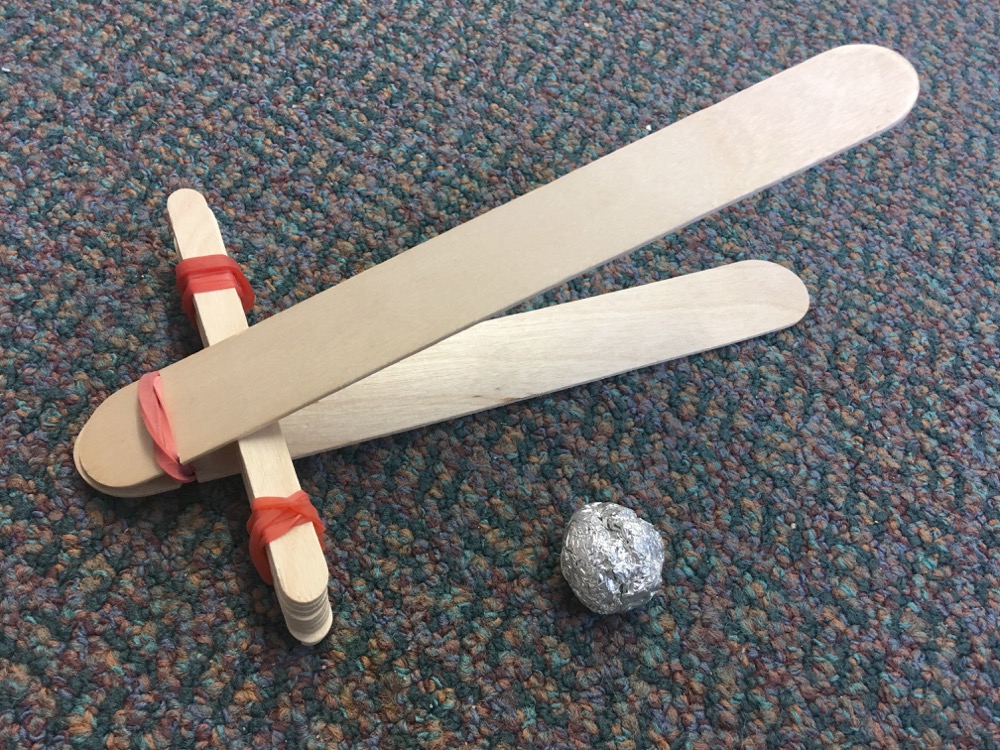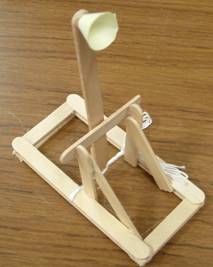

I gave them a few minutes to discuss what they wanted to make while I set out the supplies. I passed out pictures of different catapult designs, including this one from Z Home Team, this one from, and this one from (I had made a sample of this one, except I used a spoon instead of a popsicle stick with a cup on the end.

I told the kids that they would be designing and creating their own catapults, and had them break into pairs. We talked about the different things to consider when targeting with a catapult: the amount of tension you apply when you pull the launching arm back, the vertical speed (how high the projectile flies), the horizontal speed (how far it flies), and gravity (how fast it falls). We talked about potential energy (the energy stored up when you pull the launcher back), and kinetic energy (the motion energy released when the toy bird flies into the air). I brought out my kids’ Angry Birds: Knock on Wood Game, which includes a simple plastic catapult for launching a toy bird, and demonstrated it, asking the kids how it worked. (I forgot to mention that catapults are even used today to launch planes from ships.) We talked briefly about the history of catapults, which originated in Ancient Greece and were used widely in the Middle Ages to hit castle walls, or sending flaming projectiles (or disgusting, illness-producing ones like garbage or corpses) onto the castle grounds. We talked about why understanding how things move is important, for everything from planes and rockets to much simpler tools like spears and rocks. One of them described physics as the study of motion, which was a good lead-in to our project. I started out by asking the kids what they knew about physics. We made marshmallow catapults, and a huge mess, but it was fun! This week’s theme for the Sizzling Science program for grades 5 and 6 at the Burlingame Public Library was Fun with Physics.


 0 kommentar(er)
0 kommentar(er)
